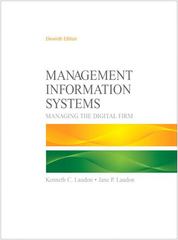Question
1. An evaluation technique that examines the ongoing operations of the project. It focuses on what staff and participants do, whether the target population is
1. An evaluation technique that examines the ongoing operations of the project. It focuses on what staff and participants do, whether the target population is being served, what parts of the project are working as expected, and what parts are not working is called A. Process evaluation B. Formative evaluation C. Implementation evaluation D. All of the above
6. The Kirkpatrick-Phillips Model states that organizations do not always measure ... and instead put too much emphasis on metrics such as cost-saving, compliance or user satisfaction A. ROI B. Training Cost C. KPIs D. All of the above 7. The baseline should be determined developing a results chain and monitoring plan. A. After B. Before C. None of the above D. All of the above
9. A systematic, focused plan for collecting data to determine whether the program model is implemented as originally intended and, if not, how operations differ from those initially planned is called A. Outcome evaluation B. Process evaluation C. Cost benefit evaluation D. Impact evaluation
15. Assessing whether activities were implemented on schedule and within budget measures A. Sustainability B. Relevance C. Effectiveness D. Efficiency 16. When measuring changes brought about by the project including any unplanned and or unintended outcomes the project manager is trying to establish the projects? A. Effectiveness B. Efficiency C. Impact D. Relevance 17. Real Time evaluations, Meta-evaluations, Thematic evaluations and Cluster evaluations are all ways of classifying evaluations based on A. Who is involved B. Timing C. Project stages D. Methodology
25. What is the name of a project evaluation design, where the evaluator gathers data following an intervention or program, for example, a survey of participants might be administered after they complete a workshop? A. Retrospective Pre-test B. One-shot design C. Time series design D. Post-test-only Control Group design CANDIDATE NO PMH/PMB__________ PMZ PGDPM SEMESTER 1 EXAMS JUNE 2023 Examinations PM&E04 Page 6 26. A project evaluation design were the evaluator gathers data on two separate groups prior to and following an intervention or program. One group, typically called the experimental or treatment group, receives the intervention. The other group, called the control group, does not receive the intervention, is called: A. Pre-test-post-test control group design B. One-group Pre-test-Post-test design C. Pre-test-post-only control group design D. Retrospective design 27. An evaluation tool that allows for systematic review that can be useful in setting benchmark standards and establishing periodic measures of improvement is: A. Case study B. Checklist C. Community book D. Community interviews/meeting
35. According to the Most Significant Change technique, ideally, all stories should be checked for accuracy before being used or passed on to the next level of the hierarchy. This step is known as A. Appraisal B. Justification C. Verification D. Validation
37. A .. is a table that builds upon a project log-frame to detail key M&E requirements for each indicator and assumption. A. Monitoring and evaluation plan B. Indicator tracking table C. Conceptual framework D. Results framework 38. The M&E plan should be completed during the . of a project/programme. A. Planning stage B. Implementation stage C. Evaluation stage D. None of the above
40. What are the cost types in modern quality management? A. Costs of good quality costs of bad quality B. Planning costs assurance costs control costs C. Planning costs doing costs checking costs acting costs D. Prevention costs appraisal costs failure costs
44. What does the term 'longitudinal design' mean? A. A study completed far away from where the researcher lives. B. A study which is very long to read. C. A study with two contrasting cases. D. A study completed over a distinct period of time to map changes in social phenomena.
50. According to the M and E framework, what is used to describe changes have occurred as a result of the outputs and to what extent are these likely to contribute towards the project purpose and desired impact? A. Impact B. Outcomes C. Purpose D. Output
53. Which sampling method that involves selecting a fixed/predetermined number of units with a particular characteristic & comparing with an equal number of units that are similar but lacking in that particular characteristic of interest is called: A. Quota sampling B. Stratified random sampling C. Purposive sampling D. Random sampling
Step by Step Solution
There are 3 Steps involved in it
Step: 1

Get Instant Access to Expert-Tailored Solutions
See step-by-step solutions with expert insights and AI powered tools for academic success
Step: 2

Step: 3

Ace Your Homework with AI
Get the answers you need in no time with our AI-driven, step-by-step assistance
Get Started


